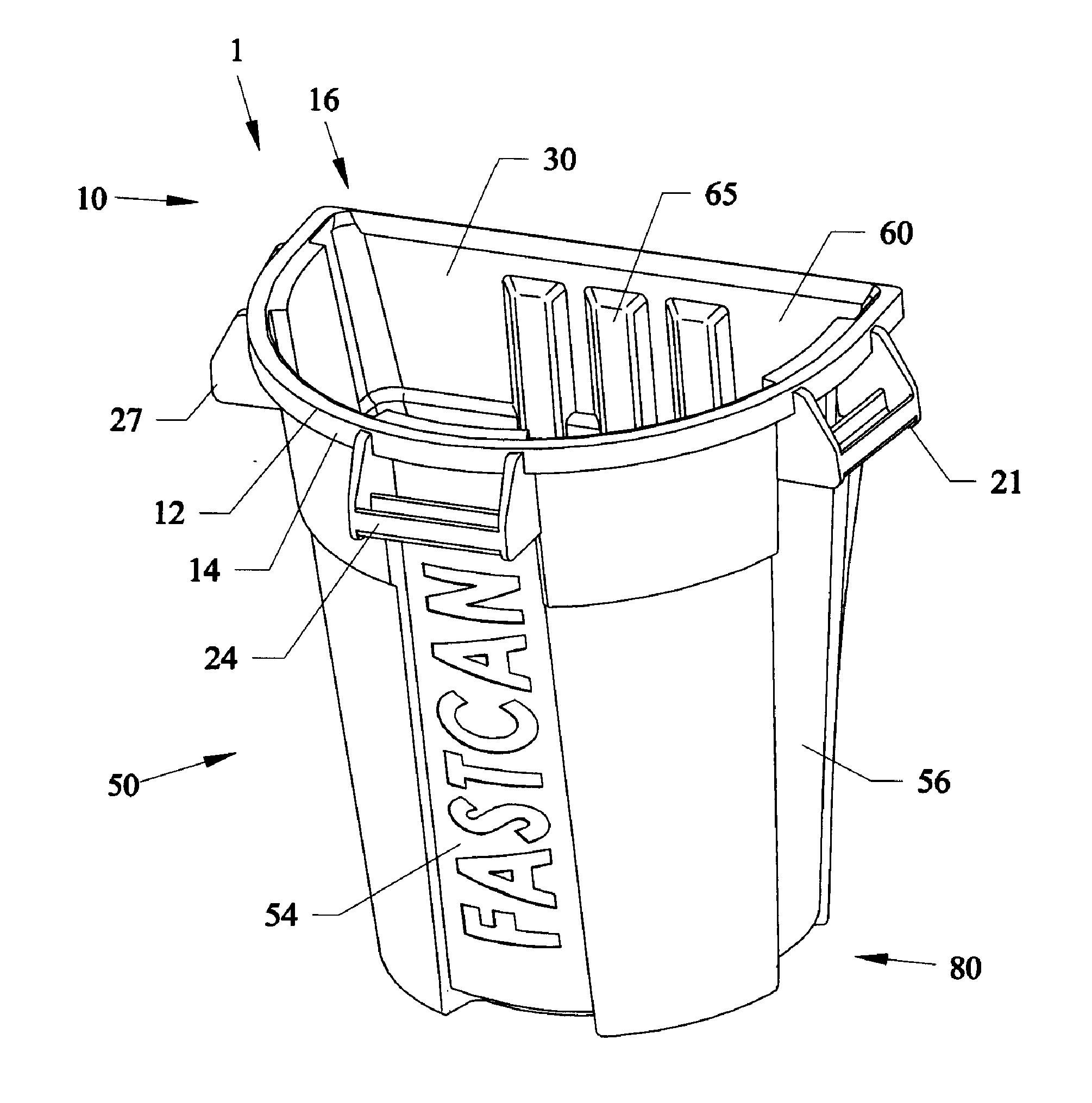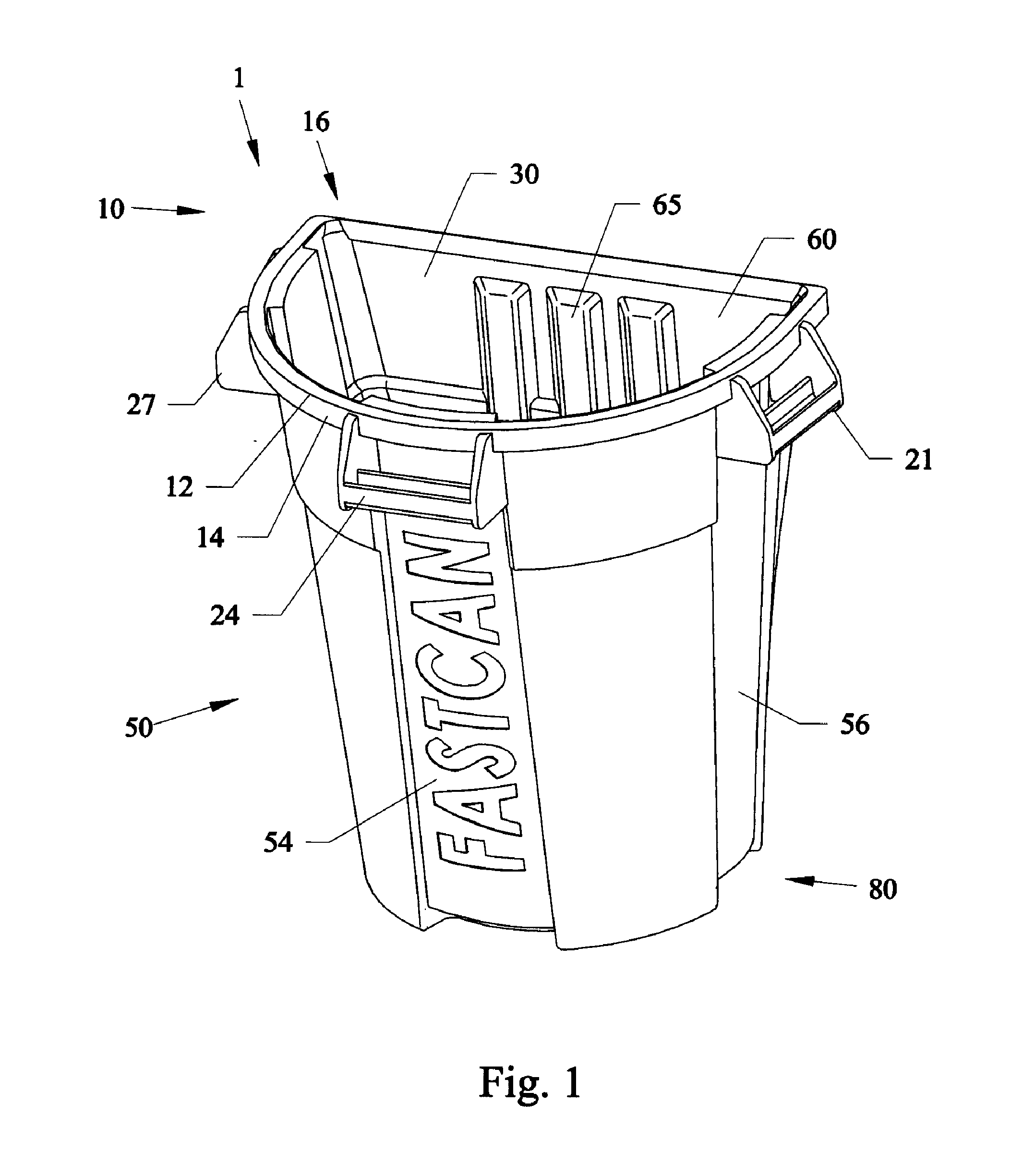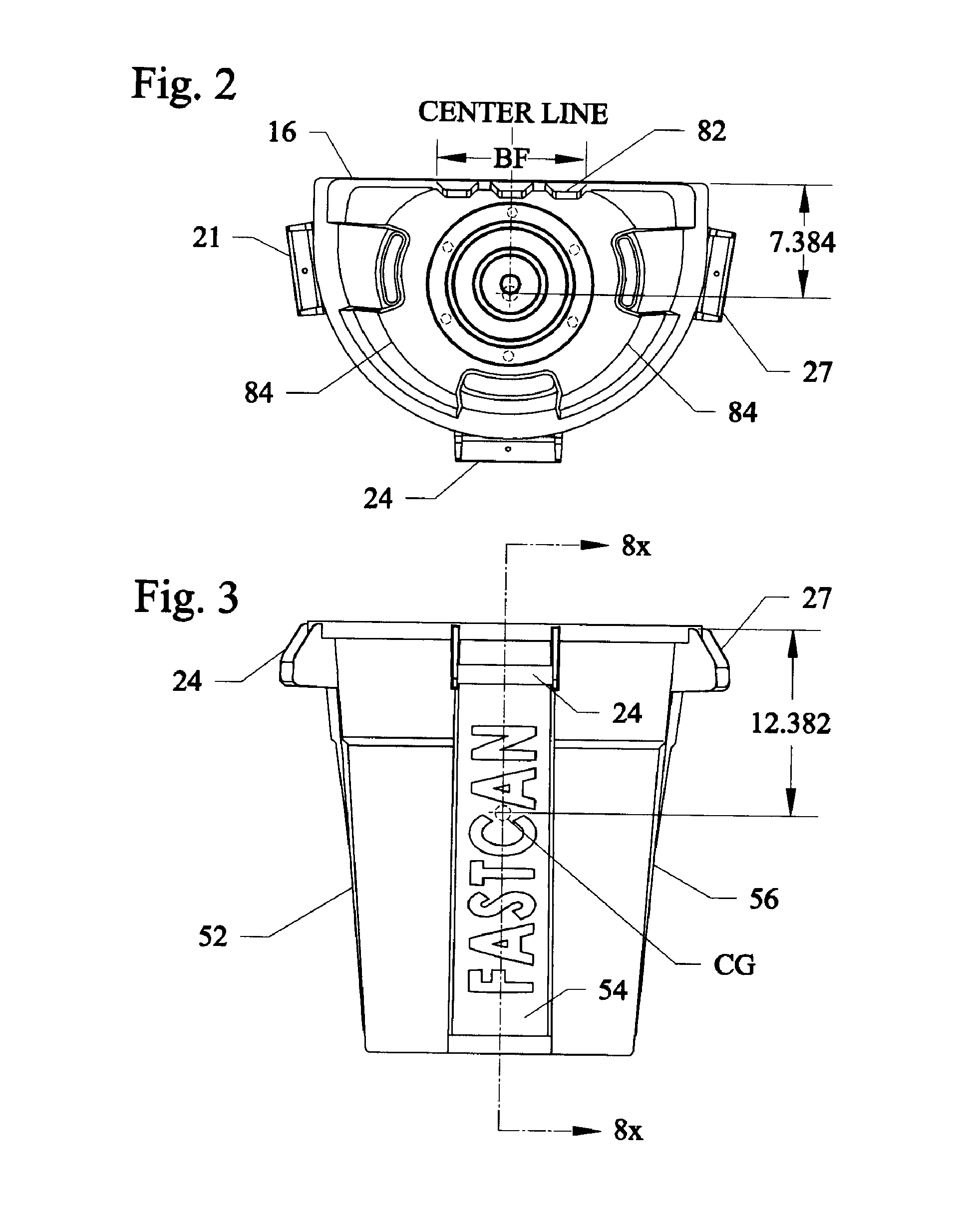However, the upright standing position generally requires the user having to physically bend and
pickup the refuse with one's hands to place it into the standing container.
In addition to the undesirable physical movements, it is usually undesirable to physically touch the refuse even if one uses gloves.
Furthermore, physically lifting up and moving the refuse usually results in some debris dropping out and having to be picked up again.
However, the circular opening to the container makes it difficult and near impossible to sweep, rake, and move the refuse into the container.
However, the circular opening is not meant to bend, and also, the user can slip, fall and get hurt trying to stand on the sides of a plastic container.
However, these containers have open ends with often larger interior
diameter sized spacing than their closed ends, which makes the containers difficult if not impossible to stand on their closed bottom ends.
Furthermore, filling these containers with debris can create an unstable container since the interior weight is concentrated toward the upper open ends and would tend to cause the containers to fall over spilling their contents out.
These containers also do not have reinforced wall designs on the flat side, nor complex curves at the base specifically designed for strengthening debris holding wall so as to maintain the integrity while in use.
Furthermore, all of these containers must be physically lifted and carried to be moved which makes them difficult when filled to be mobile.
Leatherman '183, Fuhr '476, Wade '531, Lichtenwalner '588 and Cates '495 each describe debris container having side walls forming rectangular shapes that also have their open ends be larger in interior cross-section than their closed bottom interior ends so that filling up the containers causes a stability problem when trying to vertically stand the container up since more weight is adjacent the upper open end than the closed end.
These containers would also tend to fall over and spill their contents out during use.
The containers can also not be very stable when filled with debris and can easily tip over and spill the container contents when being used.
Further, Presnell '235 and Burgan '888 only have handles on left and right sides of the containers which make it difficult to lift from horizontal to
standing positions and vice versa.
Also, both containers have raised rectangular shaped lip edges adjacent their upper open ends making it difficult to push debris over the bump like edges into the containers.
Additionally, the small flat mouth edges of these references are much too small to allow traditional 24 inch wide brooms and rakes enough space to effectively sweep debris into the containers.
However, this separate dolly would add unnecessary space,
assembly, and expense requirements in order to be effectively used.
None of the containers of the prior art allow for the user to easily lift and lower the containers from horizontal to vertical positions and vice versa, solely by using easily reachable handles.
The prior art containers generally require the user have to physically lift the container itself about their side walls and / or upper open end edges which makes moving the containers difficult and uncomfortable.
The containers of the prior art are difficult to carry over one's shoulder and back.
Completely cylindrical containers tend to wobble and roll and are difficult to hold in place over one's shoulder and back when using one hand.
Rectangular shaped containers are uncomfortable when placed over the shoulder and back and cannot be adequately supported by one hand.
The prior art containers when laid on their sides tend to wobble and roll and do not generally remain flush against the ground.
Also, when stored, the prior art containers generally cannot be placed flush against walls in storage rooms, garages and the like.
Thus, the prior art containers waste space since they cannot be placed flush against walls during storage.
None of the refuse containers described above that can lie on their sides can be formed from a single mold, and instead would be expensive and undesirable to manufacture.
The prior art containers generally have a high center of gravity so that when filled the containers are unsteady, tend to wobble and can fall over.
None of the containers allow for a both a strong and slopping lip edge to allow debris to be easily slid into the container.
Also, none of the containers combine both a wide flat edge large enough to
handle 24 inch brooms and rakes while having enough mouth height on the containers to allow one to move substantial amounts of debris into the containers in one sweep.
In addition to the other problems with the prior art, users must physically carry long handled garden tools such as rakes, hoes and shovels when using these containers.
However, long handled tools can easily slip out of the clip, and / or the clip can easily break off.
Thus, none of these references allow for attaching, storing and carrying tools such as rakes and brooms with debris containers.
Additional problems with most trash receptacles are that they are impractical when used on their sides to sweep refuse into the containers.
For example, tubular containers and rectangular containers usually require reinforced thick edges that do not allow for the containers when being laid on their sides to be able sweep refuse in.
As such, this dust pan needs to have space to be stored, and appears to be restricted for attachment to rounded edges of a circular trash can.
Cross '531 requires a bendable insert and large funnel to be used with a trash can, which is also undesirable for storage, and also appears to be unusable for trash cans having flat side edges.
In other words the slidable ramp would easily disengage and fall off during use, and would not be practical.
However, this lid would not be able to be used to push and slide refuse into a container that is put on its' side.
 Login to View More
Login to View More 


